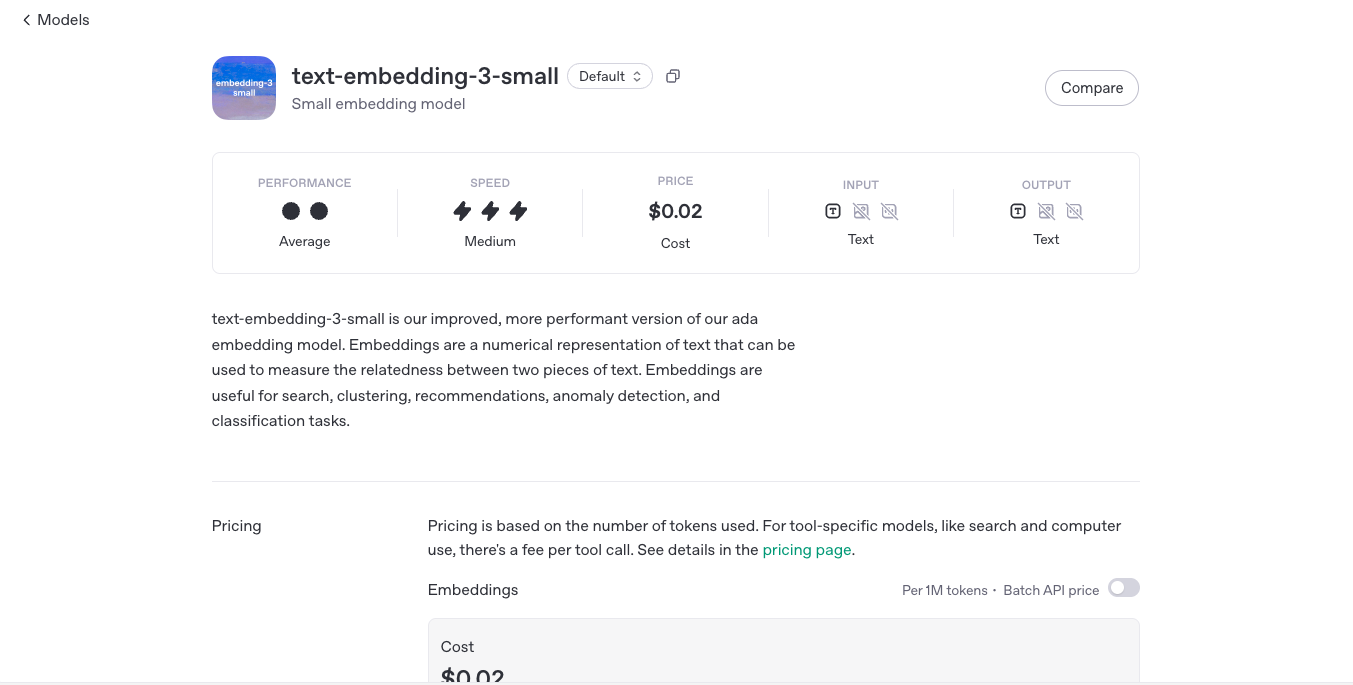
Despite its “small” label, this model punches well above its weight, providing excellent performance for the vast majority of use cases where embedding is key.
- Search & Retrieval Engineers: Build fast, scalable semantic search engines with compact, high-quality vectors.
- Recommendation System Developers: Generate embeddings for user behavior, product descriptions, or content metadata.
- NLP Practitioners: Train classification or clustering models on top of semantically rich vector representations.
- Startup Teams & Solo Devs: Reduce costs while still getting great embedding quality for chatbots, apps, or internal tools.
- Data Scientists: Use embeddings for anomaly detection, sentiment analysis, or document similarity tasks.
- Academic Researchers: Apply in large-scale corpus analysis, text clustering, or low-cost NLP experiments.
How to Use text-embedding-3-small?
- Step 1: Choose the Model: Select text-embedding-3-small when calling the v1/embeddings API endpoint.
- Step 2: Format Your Input: Send plain text, sentences, paragraphs, or documents—up to 8,192 tokens in a single call.
- Step 3: Get Your Embeddings: Receive a dense vector (1536 dimensions) that numerically represents the meaning of the input text.
- Step 4: Use Embeddings in Applications: Perform similarity comparison, clustering, vector search, classification, or as input to downstream models.
- Step 5: Store and Index Efficiently: Use vector databases like Pinecone, Weaviate, or FAISS to store and search embeddings.
- Incredibly Affordable: 5x cheaper than text-embedding-3-large, making it perfect for large-scale use.
- Compact Size: With just 1536 dimensions, it strikes a balance between speed, cost, and performance.
- High Accuracy: Nearly matches the performance of larger models on most semantic similarity benchmarks.
- Long Context Handling: Accepts inputs of up to 8192 tokens, ideal for embedding large documents or transcripts.
- Updated Architecture: Part of OpenAI’s 2024 embedding series—faster, smarter, and more optimized.
- Smooth Transition Path: Designed as a drop-in replacement for older models like text-embedding-ada-002.
- Ultra Low-Cost Option: Scalable for millions of embeddings without budget blowout.
- Fast & Lightweight: Lower latency and better throughput for real-time applications.
- High-Quality Vectors: Delivers semantically meaningful vectors with strong benchmark performance.
- Handles Long Documents: Supports longer inputs, reducing the need to chunk text aggressively.
- Easily Integrates with Vector DBs: Works seamlessly with Pinecone, Qdrant, FAISS, and others.
- Slightly Lower Accuracy than Large Model: In edge cases, text-embedding-3-large outperforms.
- No Custom Training: Fine-tuning is not supported; you must use the model as-is.
- No Native Multilingual Support Notes: Performance in non-English text may vary.
- 1536-D Vector Still Relatively Large: Might be overkill for ultra-lightweight applications.
- Model Choice Matters: Users must manually select between small vs. large based on tradeoffs.
1 million tokens
$0.02
Proud of the love you're getting? Show off your AI Toolbook reviews—then invite more fans to share the love and build your credibility.
Add an AI Toolbook badge to your site—an easy way to drive followers, showcase updates, and collect reviews. It's like a mini 24/7 billboard for your AI.
Reviews
Rating Distribution
Average score
Popular Mention
FAQs
Similar AI Tools
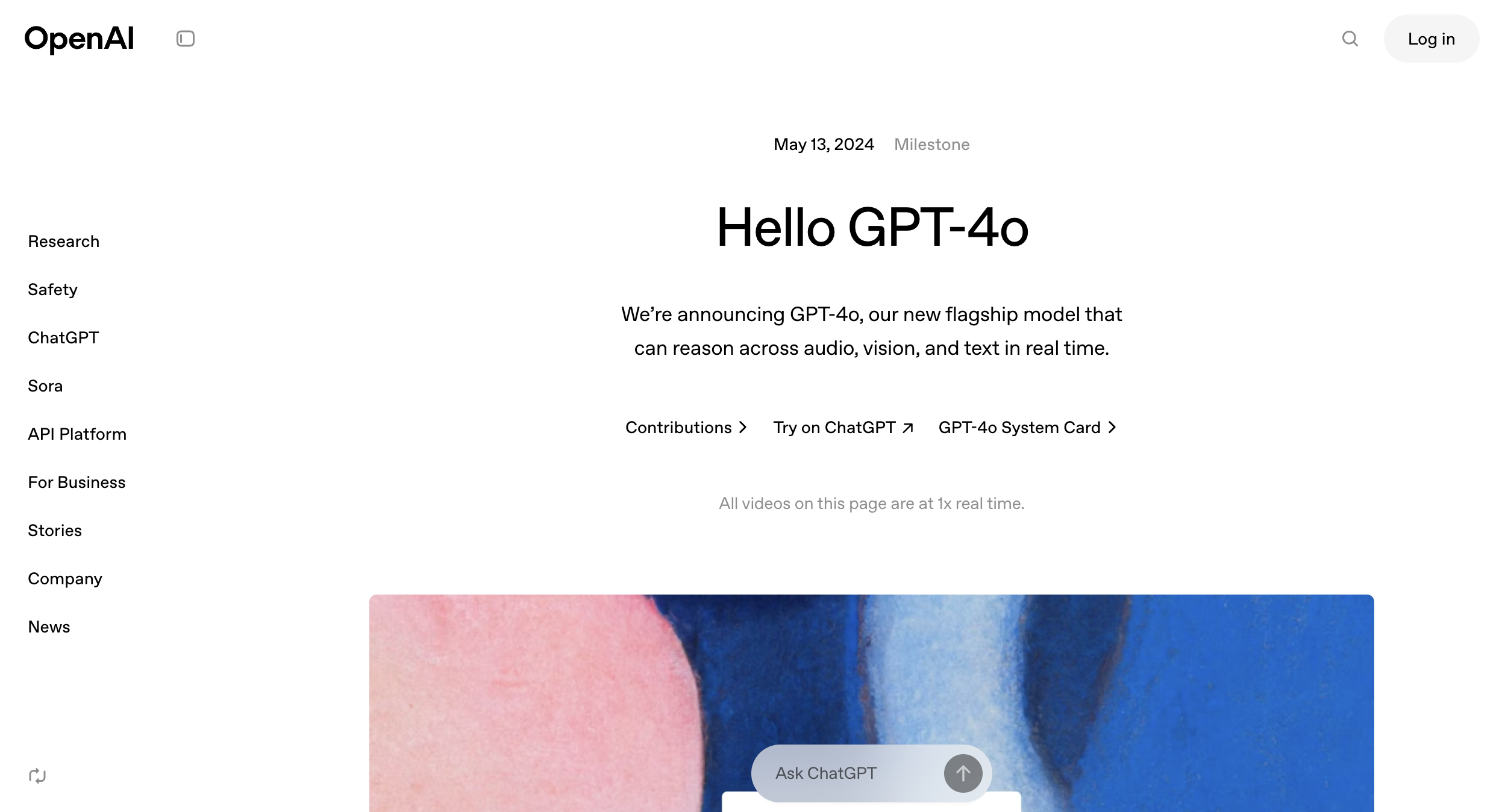

OpenAI GPT-4o
GPT-4o is OpenAI’s latest and most advanced AI model, offering faster, more powerful, and cost-efficient natural language processing. It can handle text, vision, and audio in real time, making it the first OpenAI model to process multimodal inputs natively. It’s significantly faster and cheaper than GPT-4 Turbo while improving accuracy, reasoning, and multilingual support.


OpenAI GPT-4o
GPT-4o is OpenAI’s latest and most advanced AI model, offering faster, more powerful, and cost-efficient natural language processing. It can handle text, vision, and audio in real time, making it the first OpenAI model to process multimodal inputs natively. It’s significantly faster and cheaper than GPT-4 Turbo while improving accuracy, reasoning, and multilingual support.


OpenAI GPT-4o
GPT-4o is OpenAI’s latest and most advanced AI model, offering faster, more powerful, and cost-efficient natural language processing. It can handle text, vision, and audio in real time, making it the first OpenAI model to process multimodal inputs natively. It’s significantly faster and cheaper than GPT-4 Turbo while improving accuracy, reasoning, and multilingual support.
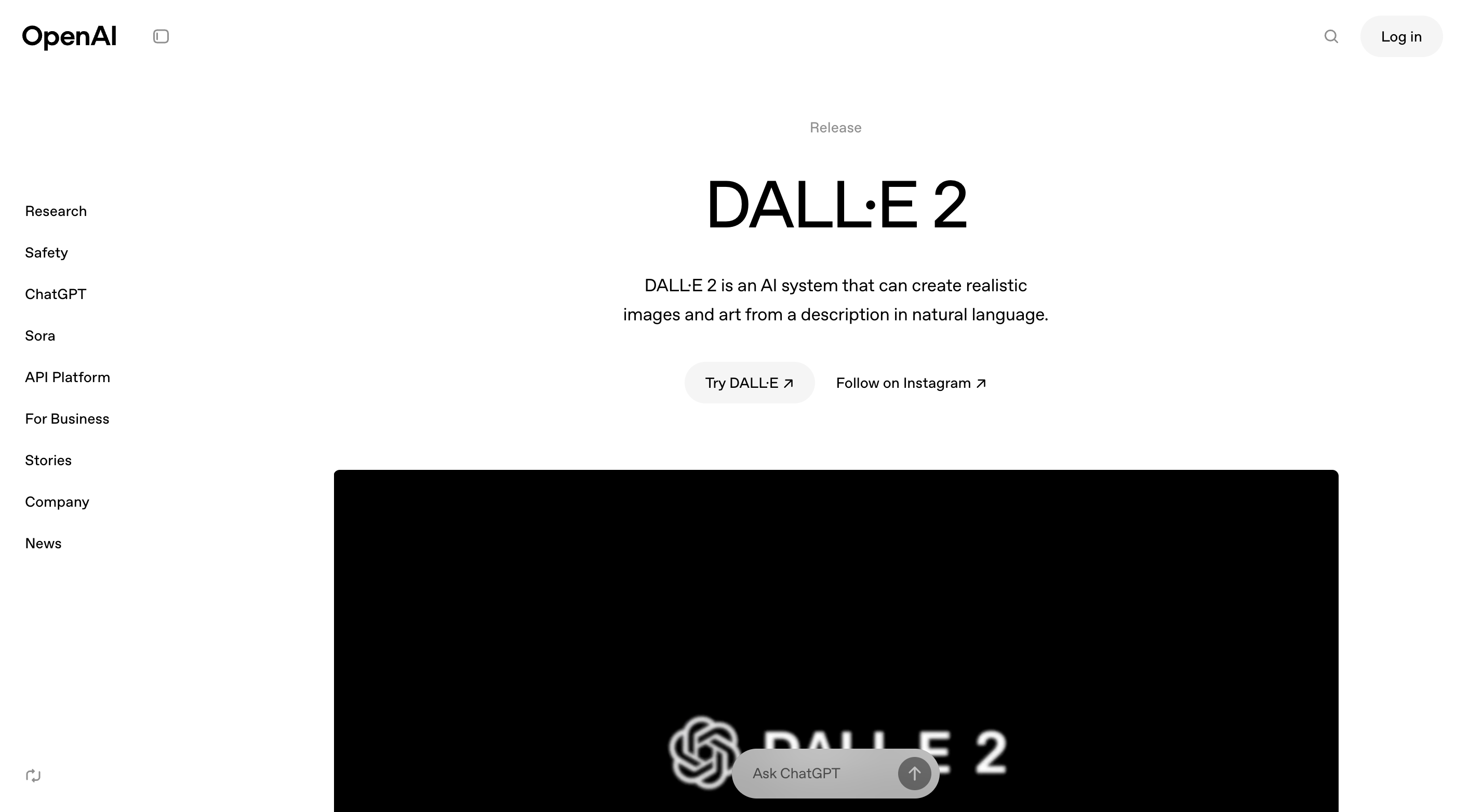

OpenAI Dall-E 2
DALL·E 2 is an AI model developed by OpenAI that generates images from text descriptions (prompts). It improves upon its predecessor, DALL·E 1, by producing higher-resolution, more realistic, and creative images based on user input. The model can also edit existing images, expand images beyond their original borders (inpainting), and create artistic interpretations of text descriptions. ❗ Note: OpenAI has phased out DALL·E 2 in favor of DALL·E 3, which offers more advanced image generation.


OpenAI Dall-E 2
DALL·E 2 is an AI model developed by OpenAI that generates images from text descriptions (prompts). It improves upon its predecessor, DALL·E 1, by producing higher-resolution, more realistic, and creative images based on user input. The model can also edit existing images, expand images beyond their original borders (inpainting), and create artistic interpretations of text descriptions. ❗ Note: OpenAI has phased out DALL·E 2 in favor of DALL·E 3, which offers more advanced image generation.


OpenAI Dall-E 2
DALL·E 2 is an AI model developed by OpenAI that generates images from text descriptions (prompts). It improves upon its predecessor, DALL·E 1, by producing higher-resolution, more realistic, and creative images based on user input. The model can also edit existing images, expand images beyond their original borders (inpainting), and create artistic interpretations of text descriptions. ❗ Note: OpenAI has phased out DALL·E 2 in favor of DALL·E 3, which offers more advanced image generation.


OpenAI Dall-E 3
OpenAI DALL·E 3 is an advanced AI image generation model that creates highly detailed and realistic images from text prompts. It builds upon previous versions by offering better composition, improved understanding of complex prompts, and seamless integration with ChatGPT. DALL·E 3 is designed for artists, designers, marketers, and content creators who want high-quality AI-generated visuals.


OpenAI Dall-E 3
OpenAI DALL·E 3 is an advanced AI image generation model that creates highly detailed and realistic images from text prompts. It builds upon previous versions by offering better composition, improved understanding of complex prompts, and seamless integration with ChatGPT. DALL·E 3 is designed for artists, designers, marketers, and content creators who want high-quality AI-generated visuals.


OpenAI Dall-E 3
OpenAI DALL·E 3 is an advanced AI image generation model that creates highly detailed and realistic images from text prompts. It builds upon previous versions by offering better composition, improved understanding of complex prompts, and seamless integration with ChatGPT. DALL·E 3 is designed for artists, designers, marketers, and content creators who want high-quality AI-generated visuals.


OpenAI o1-pro
o1-pro is a highly capable AI model developed by OpenAI, designed to deliver efficient, high-quality text generation across a wide range of use cases. As part of OpenAI’s GPT-4 architecture family, o1-pro is optimized for low-latency performance and high accuracy—making it suitable for both everyday tasks and enterprise-scale applications. It powers natural language interactions, content creation, summarization, and more, offering developers a solid balance between performance, cost, and output quality.


OpenAI o1-pro
o1-pro is a highly capable AI model developed by OpenAI, designed to deliver efficient, high-quality text generation across a wide range of use cases. As part of OpenAI’s GPT-4 architecture family, o1-pro is optimized for low-latency performance and high accuracy—making it suitable for both everyday tasks and enterprise-scale applications. It powers natural language interactions, content creation, summarization, and more, offering developers a solid balance between performance, cost, and output quality.


OpenAI o1-pro
o1-pro is a highly capable AI model developed by OpenAI, designed to deliver efficient, high-quality text generation across a wide range of use cases. As part of OpenAI’s GPT-4 architecture family, o1-pro is optimized for low-latency performance and high accuracy—making it suitable for both everyday tasks and enterprise-scale applications. It powers natural language interactions, content creation, summarization, and more, offering developers a solid balance between performance, cost, and output quality.

GPT-4.1 Mini is a lightweight version of OpenAI’s advanced GPT-4.1 model, designed for efficiency, speed, and affordability without compromising much on performance. Tailored for developers and teams who need capable AI reasoning and natural language processing in smaller-scale or cost-sensitive applications, GPT-4.1 Mini brings the power of GPT-4.1 into a more accessible form factor. Perfect for chatbots, content suggestions, productivity tools, and streamlined AI experiences, this compact model still delivers impressive accuracy, fast responses, and a reliable understanding of nuanced prompts—all while using fewer resources.


OpenAI GPT 4.1 min..
GPT-4.1 Mini is a lightweight version of OpenAI’s advanced GPT-4.1 model, designed for efficiency, speed, and affordability without compromising much on performance. Tailored for developers and teams who need capable AI reasoning and natural language processing in smaller-scale or cost-sensitive applications, GPT-4.1 Mini brings the power of GPT-4.1 into a more accessible form factor. Perfect for chatbots, content suggestions, productivity tools, and streamlined AI experiences, this compact model still delivers impressive accuracy, fast responses, and a reliable understanding of nuanced prompts—all while using fewer resources.


OpenAI GPT 4.1 min..
GPT-4.1 Mini is a lightweight version of OpenAI’s advanced GPT-4.1 model, designed for efficiency, speed, and affordability without compromising much on performance. Tailored for developers and teams who need capable AI reasoning and natural language processing in smaller-scale or cost-sensitive applications, GPT-4.1 Mini brings the power of GPT-4.1 into a more accessible form factor. Perfect for chatbots, content suggestions, productivity tools, and streamlined AI experiences, this compact model still delivers impressive accuracy, fast responses, and a reliable understanding of nuanced prompts—all while using fewer resources.


OpenAI GPT 4o Sear..
GPT-4o Search Preview is a powerful experimental feature of OpenAI’s GPT-4o model, designed to act as a high-performance retrieval system. Rather than just generating answers from training data, it allows the model to search through large datasets, documents, or knowledge bases to surface relevant results with context-aware accuracy. Think of it as your AI assistant with built-in research superpowers—faster, smarter, and surprisingly precise. This preview gives developers a taste of what’s coming next: an intelligent search engine built directly into the GPT-4o ecosystem.


OpenAI GPT 4o Sear..
GPT-4o Search Preview is a powerful experimental feature of OpenAI’s GPT-4o model, designed to act as a high-performance retrieval system. Rather than just generating answers from training data, it allows the model to search through large datasets, documents, or knowledge bases to surface relevant results with context-aware accuracy. Think of it as your AI assistant with built-in research superpowers—faster, smarter, and surprisingly precise. This preview gives developers a taste of what’s coming next: an intelligent search engine built directly into the GPT-4o ecosystem.


OpenAI GPT 4o Sear..
GPT-4o Search Preview is a powerful experimental feature of OpenAI’s GPT-4o model, designed to act as a high-performance retrieval system. Rather than just generating answers from training data, it allows the model to search through large datasets, documents, or knowledge bases to surface relevant results with context-aware accuracy. Think of it as your AI assistant with built-in research superpowers—faster, smarter, and surprisingly precise. This preview gives developers a taste of what’s coming next: an intelligent search engine built directly into the GPT-4o ecosystem.


OpenAI GPT 4o mini..
GPT-4o-mini Search Preview is OpenAI’s lightweight semantic search feature powered by the GPT-4o-mini model. Designed for real-time applications and low-latency environments, it brings retrieval-augmented intelligence to any product or tool that needs blazing-fast, accurate information lookup. While compact in size, it offers the power of contextual understanding, enabling smarter, more relevant search results with fewer resources. It’s ideal for startups, embedded systems, or anyone who needs search that just works—fast, efficient, and tuned for integration.


OpenAI GPT 4o mini..
GPT-4o-mini Search Preview is OpenAI’s lightweight semantic search feature powered by the GPT-4o-mini model. Designed for real-time applications and low-latency environments, it brings retrieval-augmented intelligence to any product or tool that needs blazing-fast, accurate information lookup. While compact in size, it offers the power of contextual understanding, enabling smarter, more relevant search results with fewer resources. It’s ideal for startups, embedded systems, or anyone who needs search that just works—fast, efficient, and tuned for integration.


OpenAI GPT 4o mini..
GPT-4o-mini Search Preview is OpenAI’s lightweight semantic search feature powered by the GPT-4o-mini model. Designed for real-time applications and low-latency environments, it brings retrieval-augmented intelligence to any product or tool that needs blazing-fast, accurate information lookup. While compact in size, it offers the power of contextual understanding, enabling smarter, more relevant search results with fewer resources. It’s ideal for startups, embedded systems, or anyone who needs search that just works—fast, efficient, and tuned for integration.


OpenAI Computer Us..
computer-use-preview is OpenAI’s groundbreaking experimental model that enables AI agents to interact with computer interfaces—just like a human would. It combines GPT-4o’s vision and reasoning capabilities with reinforcement learning to perceive, navigate, and control graphical user interfaces (GUIs) using screenshots and natural language instructions . This model can perform tasks such as clicking buttons, typing text, filling out forms, and navigating multi-step workflows across web and desktop applications. It represents a significant step toward general-purpose AI agents capable of automating real-world digital tasks without relying on traditional APIs.


OpenAI Computer Us..
computer-use-preview is OpenAI’s groundbreaking experimental model that enables AI agents to interact with computer interfaces—just like a human would. It combines GPT-4o’s vision and reasoning capabilities with reinforcement learning to perceive, navigate, and control graphical user interfaces (GUIs) using screenshots and natural language instructions . This model can perform tasks such as clicking buttons, typing text, filling out forms, and navigating multi-step workflows across web and desktop applications. It represents a significant step toward general-purpose AI agents capable of automating real-world digital tasks without relying on traditional APIs.


OpenAI Computer Us..
computer-use-preview is OpenAI’s groundbreaking experimental model that enables AI agents to interact with computer interfaces—just like a human would. It combines GPT-4o’s vision and reasoning capabilities with reinforcement learning to perceive, navigate, and control graphical user interfaces (GUIs) using screenshots and natural language instructions . This model can perform tasks such as clicking buttons, typing text, filling out forms, and navigating multi-step workflows across web and desktop applications. It represents a significant step toward general-purpose AI agents capable of automating real-world digital tasks without relying on traditional APIs.
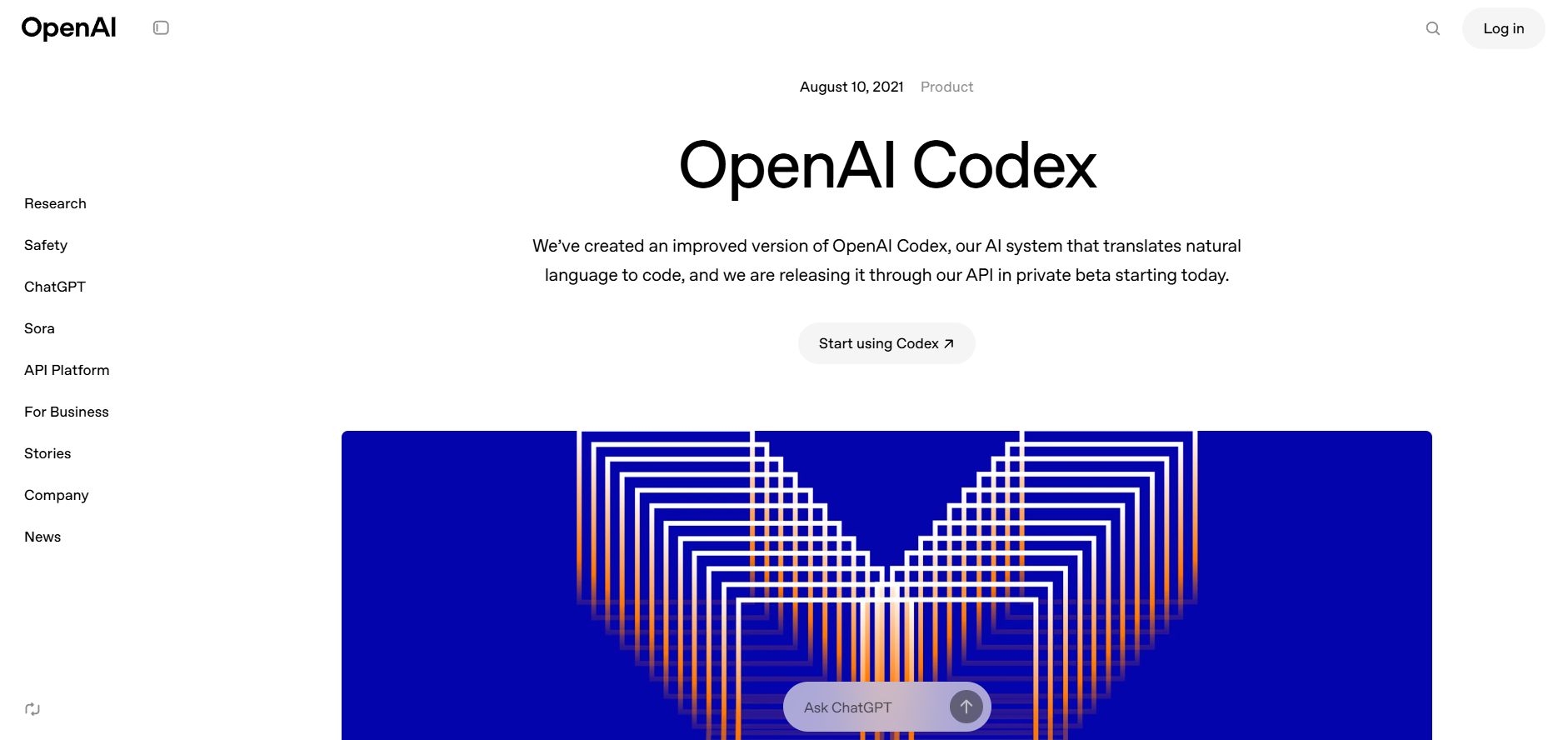
OpenAI Codex
OpenAI Codex is a powerful AI coding engine developed by OpenAI that translates natural language into code. Built on top of GPT-3, Codex understands and generates code in over a dozen programming languages, including JavaScript, Python, and more. It's the underlying model behind GitHub Copilot and is designed to help developers write code faster, learn new APIs, and prototype projects with simple language commands.

OpenAI Codex
OpenAI Codex is a powerful AI coding engine developed by OpenAI that translates natural language into code. Built on top of GPT-3, Codex understands and generates code in over a dozen programming languages, including JavaScript, Python, and more. It's the underlying model behind GitHub Copilot and is designed to help developers write code faster, learn new APIs, and prototype projects with simple language commands.

OpenAI Codex
OpenAI Codex is a powerful AI coding engine developed by OpenAI that translates natural language into code. Built on top of GPT-3, Codex understands and generates code in over a dozen programming languages, including JavaScript, Python, and more. It's the underlying model behind GitHub Copilot and is designed to help developers write code faster, learn new APIs, and prototype projects with simple language commands.
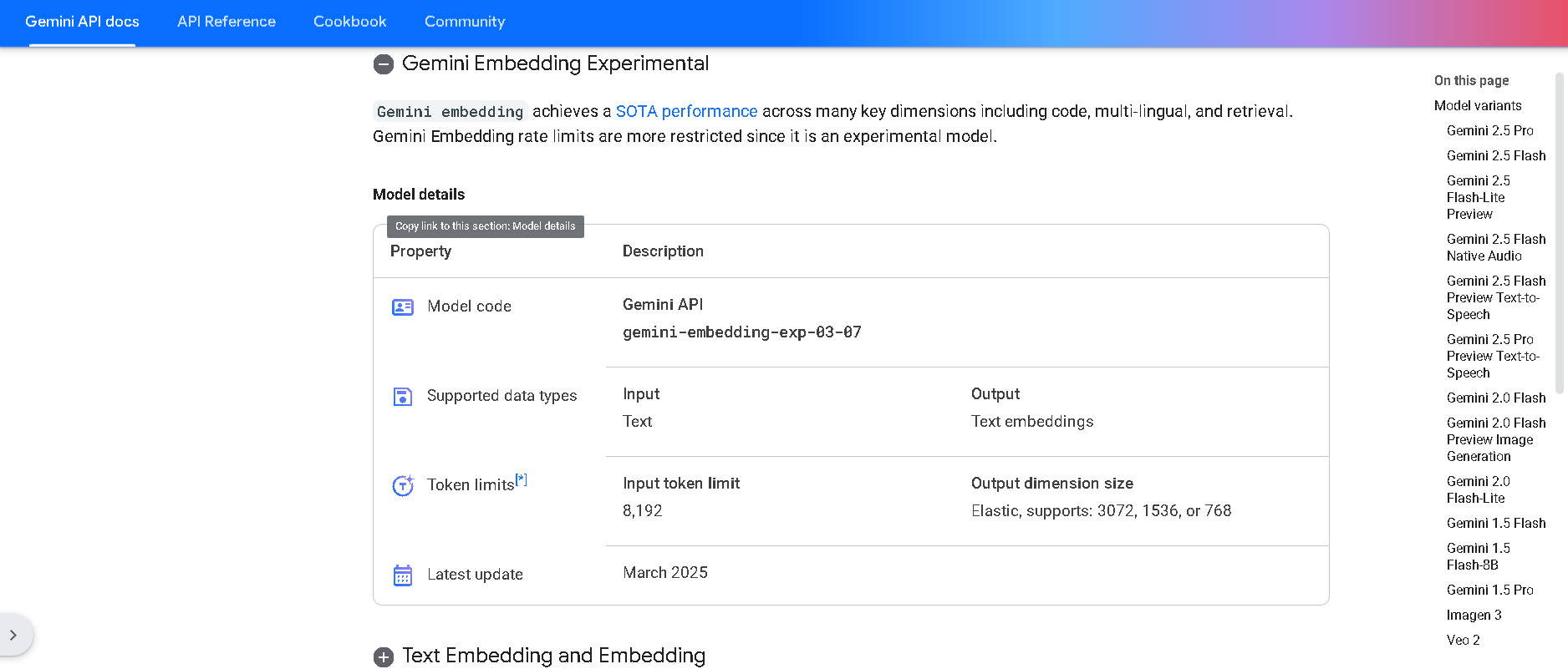

Gemini Embedding
Gemini Embedding is Google DeepMind’s state-of-the-art text embedding model, built on the powerful Gemini family. It transforms text into high-dimensional numerical vectors (up to 3,072 dimensions) with exceptional accuracy and generalization across over 100 languages and multiple modalities—including code. It achieves state-of-the-art results on the Massive Multilingual Text Embedding Benchmark (MMTEB), outperforming prior models across multilingual, English, and code-based tasks


Gemini Embedding
Gemini Embedding is Google DeepMind’s state-of-the-art text embedding model, built on the powerful Gemini family. It transforms text into high-dimensional numerical vectors (up to 3,072 dimensions) with exceptional accuracy and generalization across over 100 languages and multiple modalities—including code. It achieves state-of-the-art results on the Massive Multilingual Text Embedding Benchmark (MMTEB), outperforming prior models across multilingual, English, and code-based tasks


Gemini Embedding
Gemini Embedding is Google DeepMind’s state-of-the-art text embedding model, built on the powerful Gemini family. It transforms text into high-dimensional numerical vectors (up to 3,072 dimensions) with exceptional accuracy and generalization across over 100 languages and multiple modalities—including code. It achieves state-of-the-art results on the Massive Multilingual Text Embedding Benchmark (MMTEB), outperforming prior models across multilingual, English, and code-based tasks
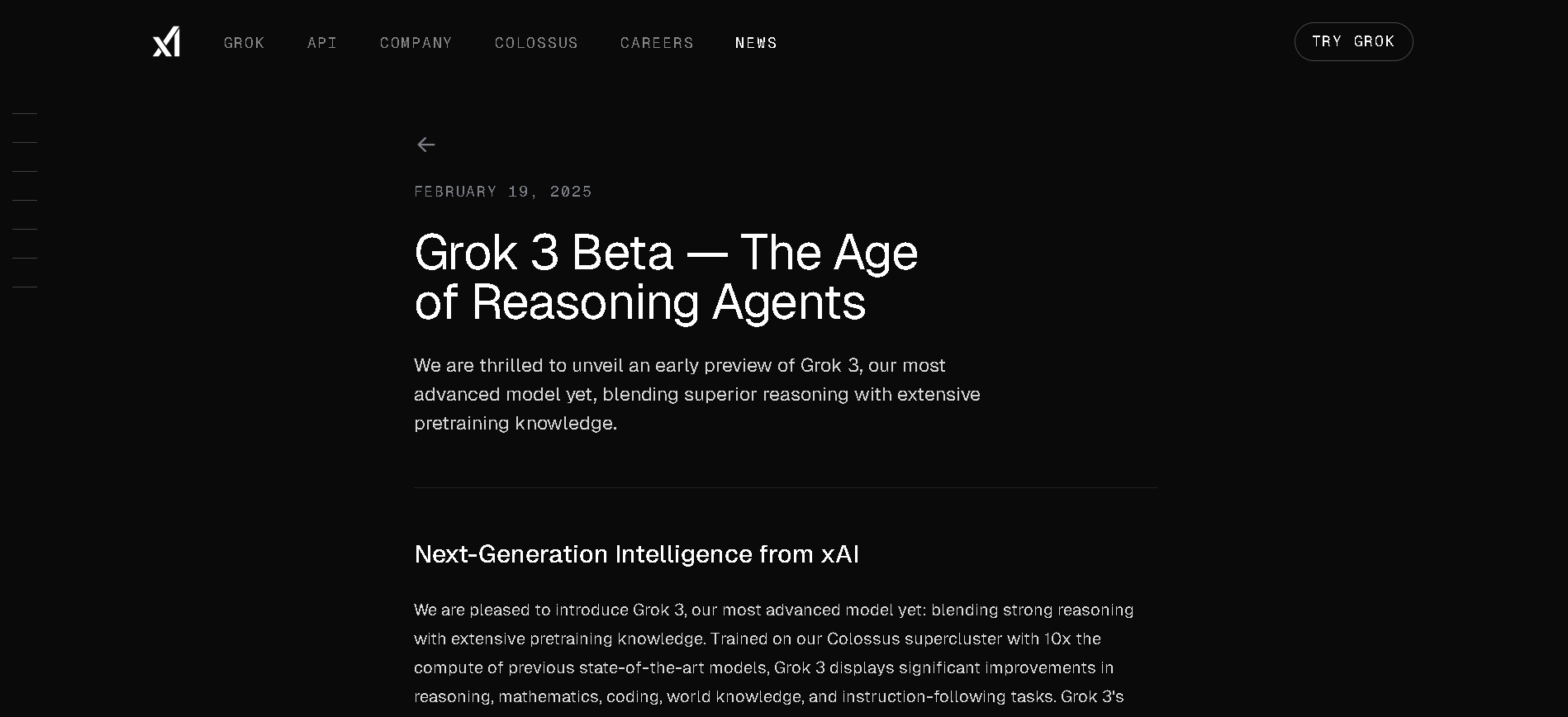

Grok 3 Mini
Grok 3 Mini is xAI’s compact, cost-efficient reasoning variant of the flagship Grok 3 model. Released alongside Grok 3 in February 2025, it offers many of the same advanced reasoning capabilities—like chain-of-thought “Think” mode and multimodal support—with lower compute and faster responses. It's ideal for logic-heavy tasks that don't require the depth of the full version.


Grok 3 Mini
Grok 3 Mini is xAI’s compact, cost-efficient reasoning variant of the flagship Grok 3 model. Released alongside Grok 3 in February 2025, it offers many of the same advanced reasoning capabilities—like chain-of-thought “Think” mode and multimodal support—with lower compute and faster responses. It's ideal for logic-heavy tasks that don't require the depth of the full version.


Grok 3 Mini
Grok 3 Mini is xAI’s compact, cost-efficient reasoning variant of the flagship Grok 3 model. Released alongside Grok 3 in February 2025, it offers many of the same advanced reasoning capabilities—like chain-of-thought “Think” mode and multimodal support—with lower compute and faster responses. It's ideal for logic-heavy tasks that don't require the depth of the full version.
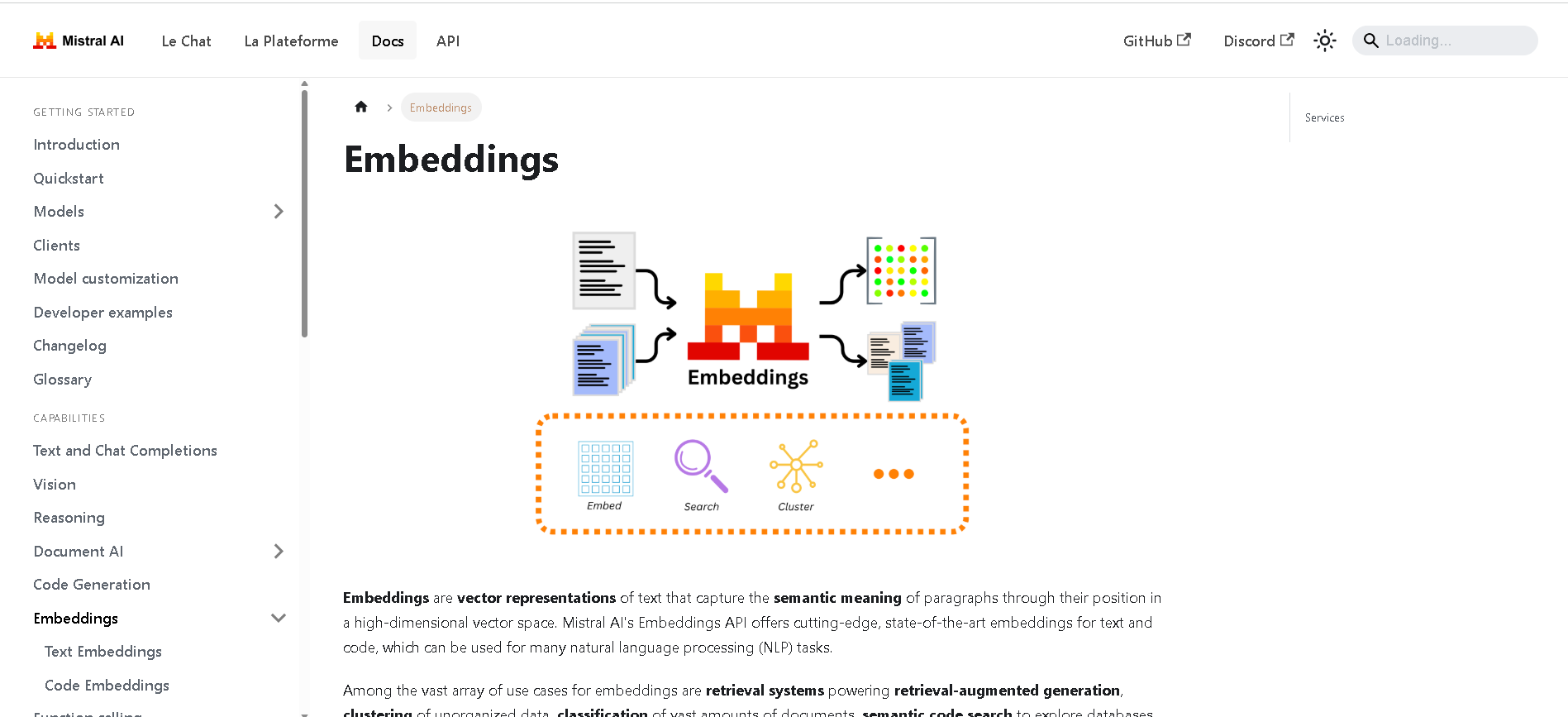
Mistral Embed
Mistral Embed is Mistral AI’s high-performance text embedding model designed for semantic retrieval, clustering, classification, and retrieval-augmented generation (RAG). With support for up to 8,192 tokens and producing 1,024-dimensional vectors, it delivers state-of-the-art semantic similarity and organization capabilities.

Mistral Embed
Mistral Embed is Mistral AI’s high-performance text embedding model designed for semantic retrieval, clustering, classification, and retrieval-augmented generation (RAG). With support for up to 8,192 tokens and producing 1,024-dimensional vectors, it delivers state-of-the-art semantic similarity and organization capabilities.

Mistral Embed
Mistral Embed is Mistral AI’s high-performance text embedding model designed for semantic retrieval, clustering, classification, and retrieval-augmented generation (RAG). With support for up to 8,192 tokens and producing 1,024-dimensional vectors, it delivers state-of-the-art semantic similarity and organization capabilities.
Editorial Note
This page was researched and written by the ATB Editorial Team. Our team researches each AI tool by reviewing its official website, testing features, exploring real use cases, and considering user feedback. Every page is fact-checked and regularly updated to ensure the information stays accurate, neutral, and useful for our readers.
If you have any suggestions or questions, email us at hello@aitoolbook.ai
